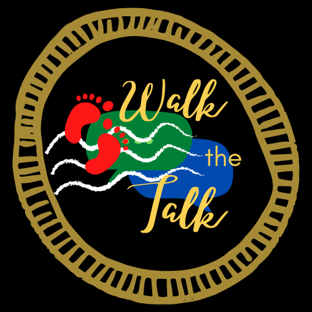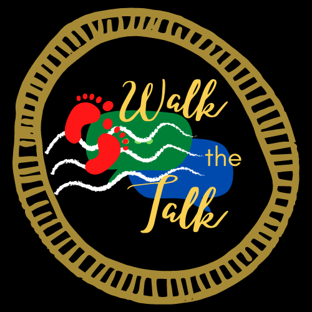Walk the Talk for Aboriginal and Torres Strait Islander Health is a virtual walking tour of Aboriginal and Torres Strait Islander health and medical services and other organisations involved in Aboriginal and Torres Strait Islander health. It’s a virtual tour because I’m not actually walking to all these places; instead I’m counting the steps I do each day and using that as a way to virtually travel around the country, stopping at all of these places and, through my blog, talking about who they are and what they do. I’ll also be talking about issues specific to Aboriginal and Torres Strait Islander health, and health in general. I also plan to talk a bit about my own health as a direct example and to hopefully help people identify with what I’m doing.
There are three main reasons I want to do this:
- raise awareness and understanding of Aboriginal and Torres Strait Islander health: more than just statistics or typical rhetoric relating to Aboriginal and Torres Strait Islander health, I want people to see what’s really happening out there today. This is as much about promoting the good things that are happening as much as it is drawing attention to the things that need to improve, as well as improving peoples’ understanding of what the issues are, why they’re important, and what needs to change. In doing so, I hope to make Aboriginal and Torres Strait Islander health a priority for everyone, not just Aboriginal and Torres Strait Islander peoples. I want everyone to Walk the Talk.
- make a call to action to improve the health and well-being of Aboriginal and Torres Strait Islander peoples: the key word here being action; I’ve been involved in Aboriginal and Torres Strait Islander health more than half my life now, and I’m still seeing the same discussions and debates over the same issues as when I first became involved, with minimal change or progress. Enough is enough. We need action if we’re going to see real change. It’s time to Walk the Talk.
- encourage Aboriginal and Torres Strait Islander peoples to make their own health a priority: if I’m going to tell people what they need to do to improve their health and well-being, then I’ve got to lead by example. By using my own health and well-being as an example, I’m hoping I can show others that there are things they can readily do in their own lives to improve their health and well-being. I’ve got to Walk the Talk.
How’s it Work?
My goal for this program is to be able to complete it within a year. Now if I was really walking all over Australia, I’d probably still be trying complete this about 10 years from now. So to try and make sure I complete it within a year, I’ve set a couple of parameters for myself. These are:
- aim for 10,000 steps a day: more than just trying to make sure I walk a fair distance each day, 10,000 steps a day has long been used as the standard for maintaining an active and healthy lifestyle (I should note that some research says it doesn’t have to be this much, and some says it should be considerably more – I’m using it as a nice round number). Some days might be more, some likely less, but I figure if I can average 10,000/day I’ll be doing well;
- in the virtual world, 1 step will equal 5 metres: my real stride length is close to a metre, which means at 10,000 steps a day I’d cover about 10km daily – not bad, but it’s not going to be enough to complete this tour within a year. So I’ve estimated that at 5m/step on average I should cover the equivalent of 50km/day, which I’m hoping will be a good pace to keep content coming through regularly and complete the tour within a year.
I’ll be tracking my steps every day and posting regular updates of my progress in the Travelogue section of this website. Every time I reach a new destination (that is, each time I complete enough steps to have achieved the virtual distance between two places) I will post an article about that place. Ideally I’ll be sharing information and images provided by that organisation that they feel is particularly important and relevant to what they’re doing right now. At the very least I’ll be showcasing the organisation and what they do. Some places will be relatively close together and I’ll be able to post new destinations fairly quickly, however Australia’s a big place and there’s quite a long way between some stops. During those times I plan to post articles about Aboriginal and Torres Strait Islander health, and my own health.
Who Developed This?
Walk the Talk is my own initiative, and something I’ve been planning to do for years. I am not affiliated with any other organisation or group, and I do not receive any funding or support from any source, beyond any good will or assistance that is voluntarily provided to me.
About Our Logo and Designer

The Walk the Talk logo was designed by Peta Fraser of Baby Drama Kween Designs (@BabyDramaKweenDesigns). Peta explained her design to me as follows:
“The circle around the main images is the tracks you’ll make to each organisation and represents the ‘WALK’ element of the title. The feet are to remind us we are grounded into the earth. The waves are to remind us we are part of the flow of life. The comment boxes represent the ‘TALK’ element of the title.”
Peta is a Migunberri/Scottish and Irish woman who produces designs out of photos of plants as part of her self care practice and to remind people about the importance of staying grounded through connection to country. Peta’s dream is to become a clothing designer and she is working towards being a First Nations Entrepreneur with her own range of natural designs. She also uses her design skills to support small businesses and individual startups to embrace their brand essence through visual expression.

Peta was very easy to work with, had great ideas, and was quick and responsive. I’d have no hesitation recommending her to anyone looking for quality design services.
Walk the Talk was fortunate to have a number of people submit designs for our logo, and I would like to acknowledge and thank all those who reached out to help.
